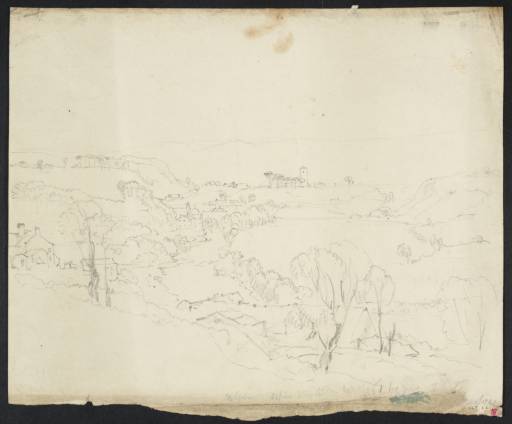References
How to cite
David Hill, ‘Leathley Church from above Lindley Mill on the River Washburn c.1818 by Joseph Mallord William Turner’, catalogue entry, June 2009, in David Blayney Brown (ed.), J.M.W. Turner: Sketchbooks, Drawings and Watercolours, Tate Research Publication, December 2012, https://www

